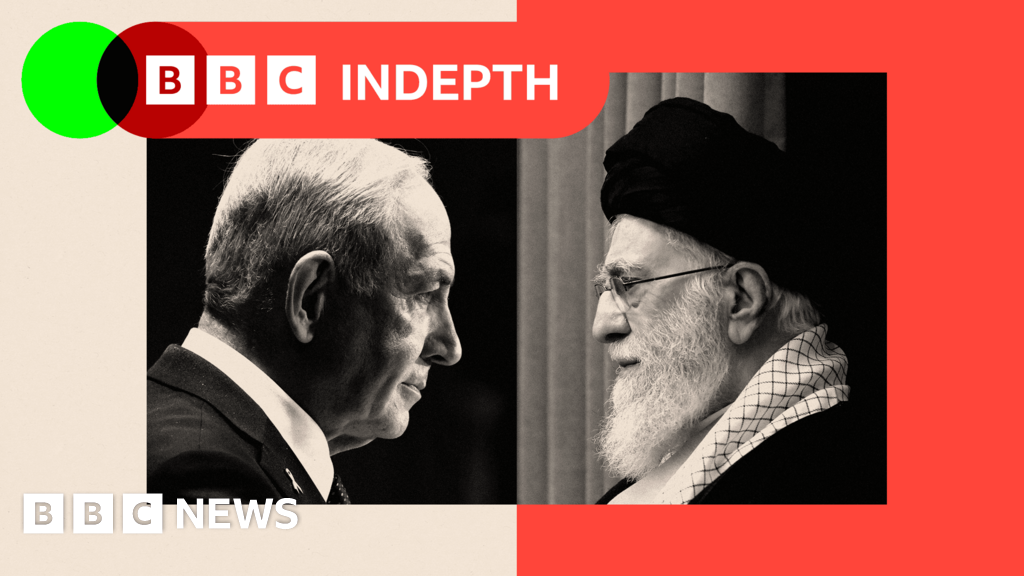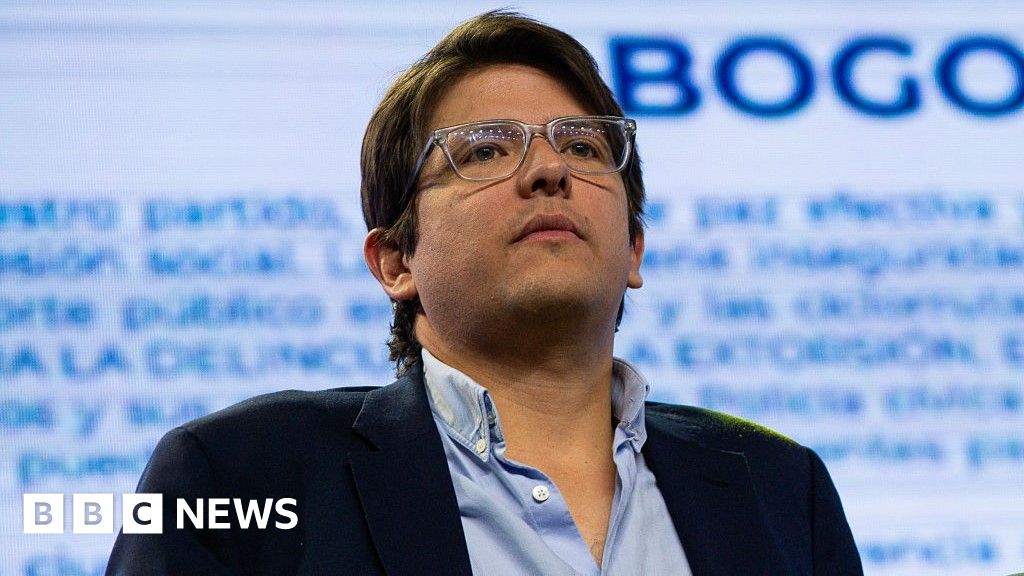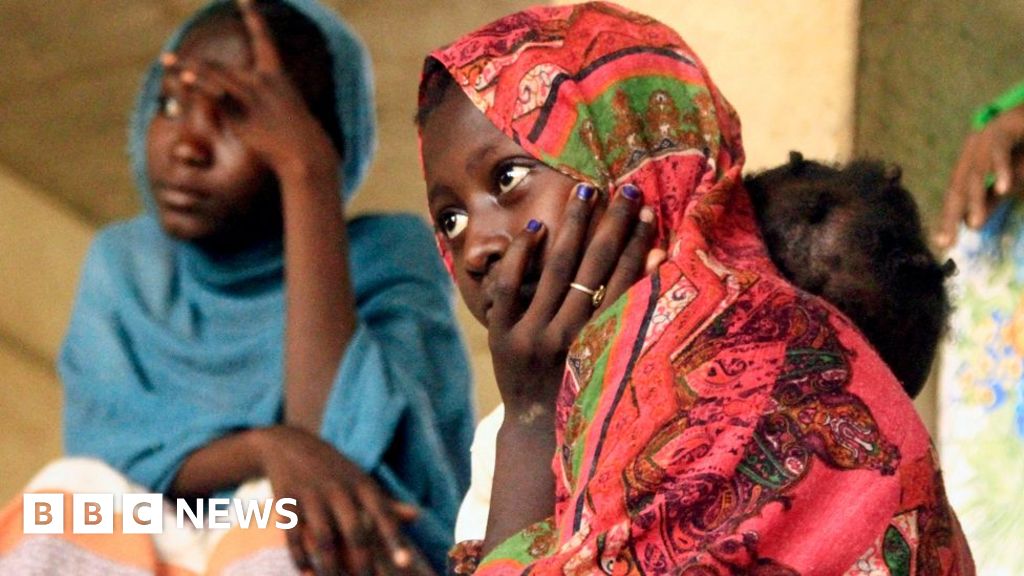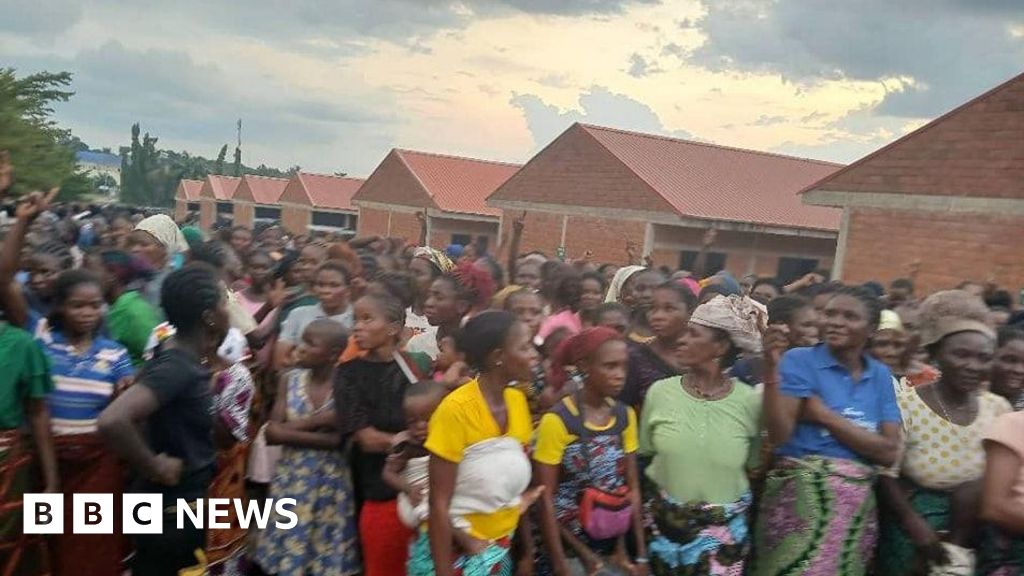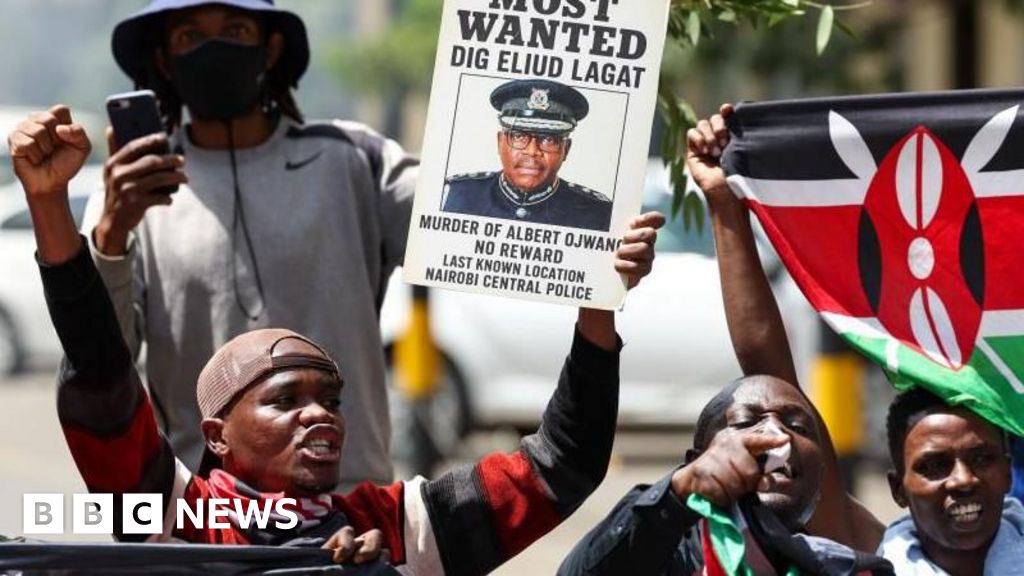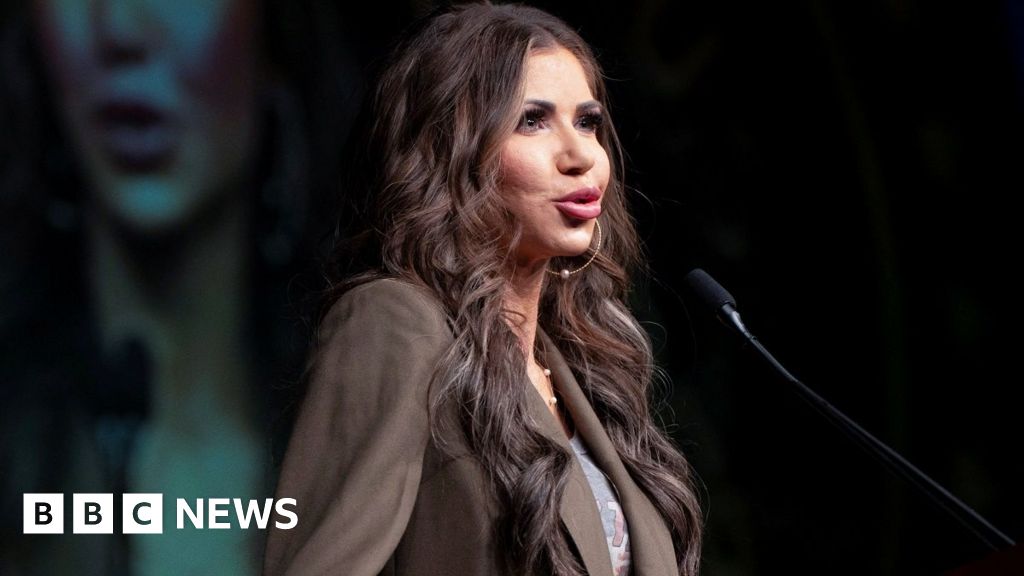BBC World Service
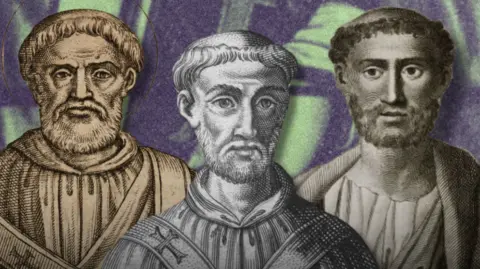 Getty Images
Getty ImagesNow predominantly Muslim, North Africa was once a Christian heartland, producing Catholic popes who left their mark on the Church to this day.
Their papacies were in the era of the Roman Empire, which stretched across modern-day Tunisia, the north-east of Algeria and the coast of western Libya.
“North Africa was the Bible Belt of ancient Christianity,” says Prof Christopher Bellitto, a historian at Kean University in the US.
Many Catholics in Africa are hoping that that the papacy will return to the continent for the first time in more than 1,500 years, as a successor to Pope Francis is chosen.
Here, we look at the three previous African popes – and how they got Christians to celebrate Easter Sunday and St Valentine’s Day.
All three have been recognised in the Church as saints.
Victor I (189-199)
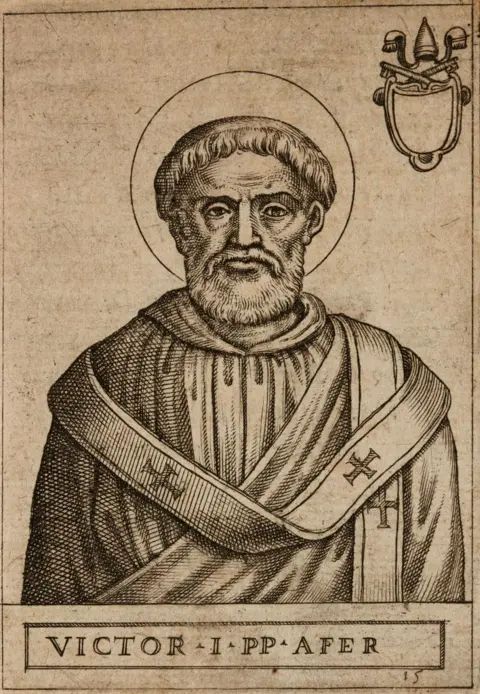 Getty Images
Getty ImagesThought to be of Berber origin, Pope Victor I was in charge of the Catholic Church at a time when Christians were sometimes being persecuted by Roman officials for refusing to worship Roman gods.
He is perhaps best known for ensuring Christians celebrate Easter on a Sunday.
In the 2nd Century, some Christian groups from the Roman province of Asia (in modern-day Turkey) celebrated Easter on the same day that Jews celebrated Passover, which could fall on different days of the week.
However, Christians in the Western part of the Empire believed that Jesus was resurrected on a Sunday, so Easter should always be celebrated on that day.
The debate over when the resurrection took place made it an extremely contentious issue.
The “Easter controversy” was symbolic of larger conflicts between East and West, and whether or not Christians should follow Jewish practices.
Victor I called the very first Roman Synod – a gathering of Church leaders – to resolve the impasse.
He did this by threatening to excommunicate from the Church those bishops who refused to comply with his wishes.
“He was a rather forceful voice for getting everyone on literally the same page,” Prof Bellitto told the BBC.
This was an impressive feat, the historian said, because “he was the Bishop of Rome when Christianity was illegal in the Roman empire.”
Another important part of Victor I’s legacy was to introduce Latin as the common language of the Catholic Church. Previously Ancient Greek was the primary language of the Catholic Liturgy as well as official communication for the Church.
Victor I himself wrote in – and spoke – Latin, which was widely spoken in North Africa.
Miltiades (AD311-314)
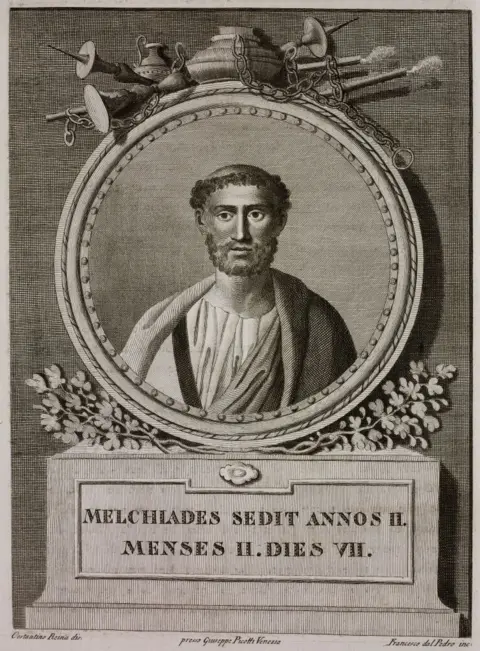 Getty Images
Getty ImagesPope Miltiades is believed to have been born in Africa.
During his reign, Christianity gained increasing acceptance from successive Roman emperors, eventually becoming the Empire’s official religion.
Before this, the persecution of Christians had been widespread at different points in the Empire’s history.
However, Prof Bellitto pointed out that Militiades was not responsible for this change, saying the Pope was the “recipient of the Roman benevolence” rather than being a great negotiator.
Miltiades was given a palace by the Roman Emperor Constantine, becoming the first pope to have an official residence.
He was also granted permission by Constantine to build the Lateran Basilica, now the oldest public church in Rome.
While modern popes live and work in the Vatican, the Lateran church is sometimes referred to in Catholicism as “the mother of all churches”.
Gelasius I (AD492-496)
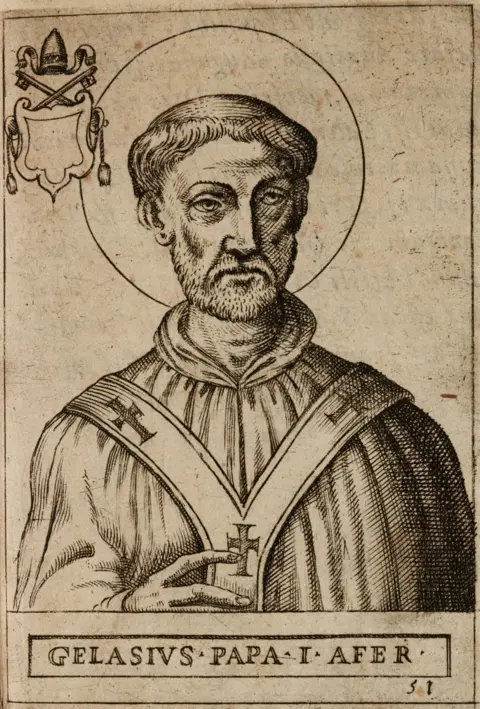 Getty Images
Getty ImagesGelasius I is the only one of the three African popes who historians believe was not born in Africa.
“There’s a reference to him being… Roman-born. So we don’t know if he [ever] lived in North Africa, but it seems clear that he was of North African descent,” Prof Bellitto explained.
He was the most important of the three African church leaders, according to Prof Bellitto.
Gelasius I is widely recognised as the first pope to officially be called the “Vicar of Christ”, a term that signifies the Pope’s role as Christ’s representative on Earth.
He also developed the Doctrine of the Two Swords, which emphasised the separate-but-equal powers of the Church and the state.
Gelasius I made the critical distinction that both powers were given to the Church by God, who then delegated earthly power to the state, making the Church ultimately superior.
“Later on, in the Middle Ages, popes sometimes tried to veto the selection of an emperor or a king, because they said God gave them that power,” said Prof Bellitto.
Gelasius I is remembered, too, for his response to the Acacian Schism – a split between the Eastern and Western Christian Churches from 484 to 519.
During this period, Gelasius I asserted the supremacy of Rome and the papacy over the entire Church, East and West, which experts believe went further than any of his predecessors.
Gelasius is also responsible for a popular celebration which is still marked every year – establishing St Valentine’s Day on 14 February in 496 to commemorate the Christian martyr St Valentine.
Some accounts say Valentine was a priest who continued to perform weddings in secret when they were banned by Emperor Claudius II.
Historians believe that Valentine’s Day is rooted in the Roman love and fertility festival, Lupercalia, and was a move by Gelasius I to Christianise pagan traditions.
What did Africa’s popes look like?
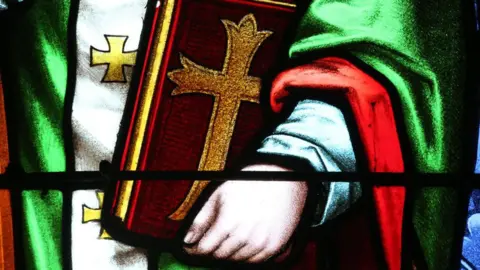 Getty Images
Getty ImagesProf Bellitto says there is no way of knowing with any degree of accuracy what the three popes looked like.
“We have to remember that the Roman Empire, and indeed the Middle Ages, didn’t think of race as we think of it nowadays. It had nothing to do with skin colour,” he told the BBC.
“People in the Roman Empire didn’t deal with race, they dealt with ethnicity.”
Prof Philomena Mwaura, an academic at Kenya’s Kenyatta University, told the BBC that Roman Africa was very multicultural, with local Berber and Punic groups, freed slaves and people who had come from Rome found there.
“The North African community was quite mixed, and it was a trade route also for many people who were involved in trade in the earlier antiquity,” she explained.
Rather than identifying with specific ethnic groups, “most people who belonged to areas within the Roman Empire regarded themselves as Roman”, Prof Mwaura added.
Why hasn’t there been an African pope since?
None of of the 217 popes since Gelasius I are believed to have come from Africa.
“The church in North Africa was weakened by very many forces, including the fall of the Roman Empire and also the incursion of Muslims [into North Africa] in the 7th Century,” Prof Mwaura said.
However, some experts argue that the prevalence of Islam in North Africa does not explain the absence of a pope from the entire continent over more than 1,500 years.
Prof Bellitto said the process of electing a new pontiff became an “Italian monopoly” for many years.
However, he said there was a strong chance of a pope from Asia or Africa in the near future because Catholics in the southern hemisphere outnumber those in the north.
In fact, Catholicism is expanding more rapidly in sub-Saharan Africa today than anywhere else.
The latest figures show there were 281 million Catholics in Africa in 2023. This accounts for 20% of the worldwide congregation.
Three Africans are in the race to succeed Pope Francis – the Democratic Republic of Congo’s Fridolin Ambongo Besungu, Ghana’s Peter Kodwo Appiah Turkson and Guinea’s Robert Sarah.
But Prof Mwaura argued that “although Christianity is very strong in Africa, the power of the Church is still in the north, where the resources have been”.
“Maybe, as it continues to be very strong within the continent and supporting itself, then a time will come when there could be an African pope,” she said.
Source link





